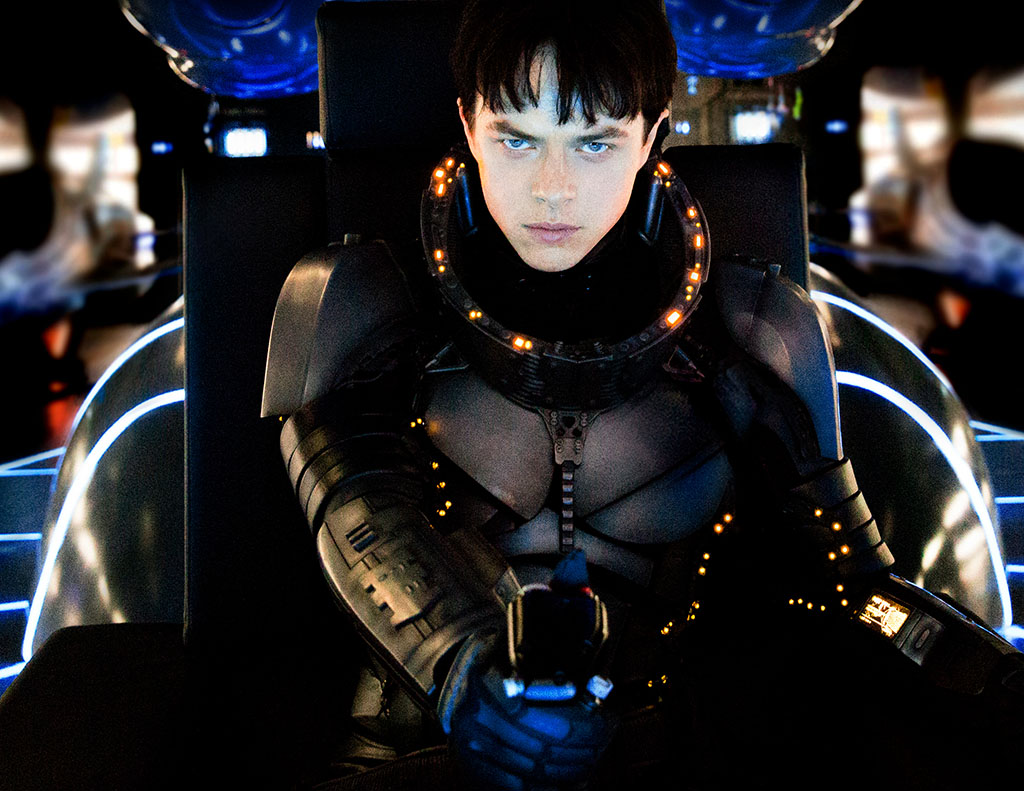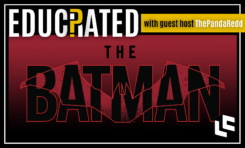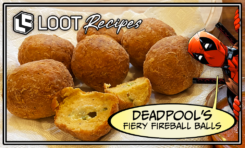This Friday July 21, director Luc Besson’s latest scifi epic Valerian and the City of a Thousand Planets is released in theaters, and it promises a dazzling universe of futuristic tech and alien culture for sci-fi fans to savor.
Ben Mauro is a concept designer on the film, and we were delighted to speak with him about Valerian‘s visuals! We’re also revealing an exclusive piece of concept art from the film, the SKYJET…
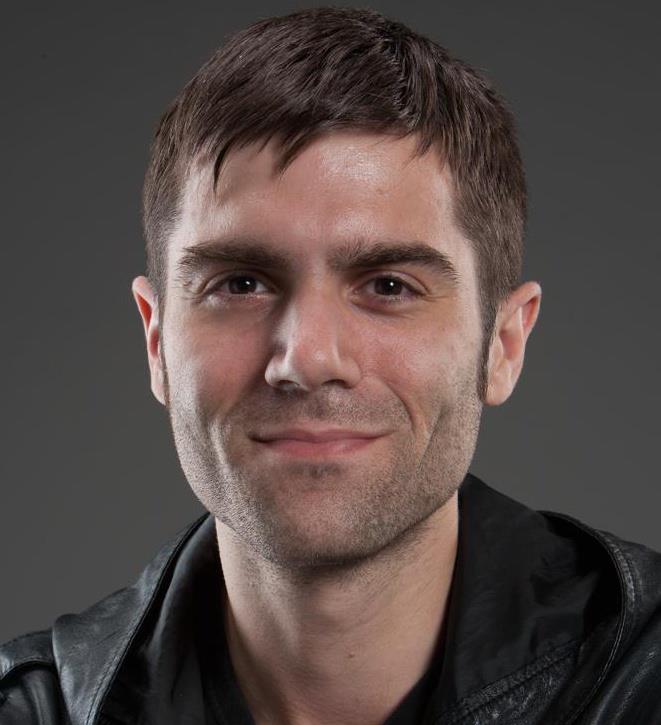
(Photo by Steve Unwin)
Hi Ben. Tell us a little about your background in design – was film always the field you wanted to get into, or did you start in another discipline?
I got my training in industrial design and entertainment design from Art Center College of Design in Pasadena, CA where I got a good set of skills to begin my career as a concept designer many years ago. I think initially I really just wanted to work in videogames, I was a huge fan of games like Halo growing up so I thought it would be fun to design levels and architecture for worlds and experiences like that. This led me to Seattle initially to explore that path out of high school, but in the middle of it I found I was more interested in the design side of things and ultimately shifted my education from more of a 3D direction into more of a design focused one down at Art Center, where it was a pretty easy transition to working in games and films afterwards with the skills I learned there.
As you began designing for films, which artists and illustrators have provided the most inspiration to your personal style?
I don’t look at much art anymore while I design, but starting out I definitely tried to learn and study everything in school, I wanted to know what had come before to get a holistic understanding of all film/automotive/product/aerospace/
architecture/nature and any other form of design throughout history. Through that study, the more entertainment based artwork that resonated most to me was mainly a combination of French and Japanese artists such as Katsuhiro Otomo, Shirow Masamune, Katsuya Terada, Kow Yokoyama, Yasushi Nirasawa, Yoji Shinkawa and Makoto Kobayashi on the Japanese side of things and artists like Moebius, Meziere, Sylvain Despretz (who I was lucky enough to get to work with on Valerian!) and Juan Gimenez on the French/European side of things. These two main groups of artists were sort of a melting pot of influences for me starting out, and of course American artists like Syd Mead, Doug Chiang, Ian Mccaig and Ralph McQuarrie are hard to not be influenced by growing up here.
When I started working professionally I sort of turned off a lot of my personal preferences for the sake of learning new skills, the first 7-8 years I just wanted to learn as many different things from everyone I was working with to grow as much as possible. On the one hand this approach was good to create a very diverse range of skills to offer clients/projects, but it also means a lot of your individuality gets lost quite a bit. Luckily the projects with Luc tend to overlap with a lot of my early influences that I enjoy the most, so Valerian came at a very good moment, I was able to sort of go back in time to all the work I loved at the beginning of my career but armed with a lot of new skills to help build this universe in much more detail than I could have when I was younger. In a way, Valerian sort of felt like the project I had been training most of my career for, which was a really cool thing to be a part of.
As a 21st century artist, what type of design do you feel is more challenging: Something that evokes the past through fantasy, like The Hobbit, or something that projects futuristic realism like Elysium?
I definitely think sci-fi work is more challenging than fantasy as far as being a designer on the project, with (live action) fantasy design it usually means taking real world elements and slightly tweaking/exaggerating them to be more fantastic or mixing ancient designs cleverly with natural or geometric forms and patterns. Something like Elysium which is a more realistic near future design direction, I guess kind of falls into a similar logic as a lot of the design was referencing real world technologies to make everything more believable while obviously exaggerating/tweaking it to create something new. I think even under those circumstances the world/scenarios created in a sci-fi setting like that are more new/interesting (to me at least) than what can be found in fantasy based projects. The most challenging projects (to me) would be sci-fi universes like what we created for Valerian, where it’s not necessarily always based on anything found on earth/reality so we are going pretty far into uncharted territory creating something new/original, those types of projects definitely push you to your limits as a designer.
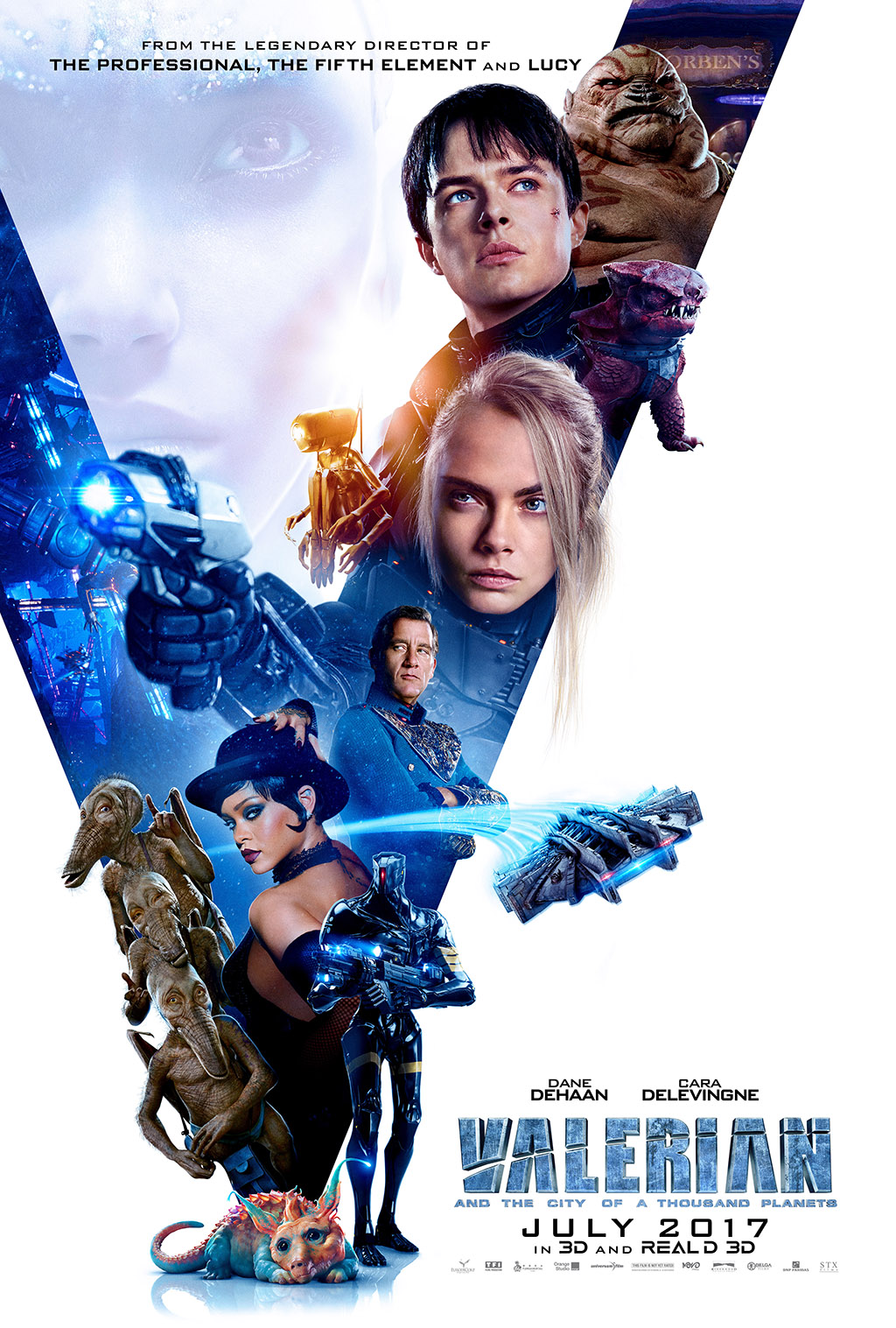
Valerian And The City Of A Thousand Planets photos courtesy of STXfilms and EuropaCorp
Valerian is your second project with Luc Besson (Lucy was the first); how did you come to work with him and what about his world-building do you find most creative?
I actually worked on an early version of Valerian before Lucy around 7 or so years ago now. Luc found some of my early work created when I was still a student and got in touch with me, I had just started working on film/videogame projects at the time and helped him out on an earlier version of the film for a few months before things went on hold for a couple years. At the time I remember being a little sad that things went on hold for so long, but in hindsight I’m kind of glad as I feel like I needed those extra years in-between to get better and be ready artistically to do the job I ended up doing on the final film.
After the success of Lucy, Valerian came back and we began on that project full-time for the last few years. I think the thing I enjoyed the most working with Luc on a world building creative level was how much he wanted to see something that was cool/original above all else, style over reality. Most of the other projects I worked on in my career followed a pretty strict ‘reality’ based logic, it’s almost more of an engineer like approach to design where everything has to be ‘grounded’, you need to be able to find something in real life and extrapolate functionality/form language from it to create something that would/could possibly exist. This logic works fine for many projects and is easy to grasp as a designer, but I find it can be restrictive creatively and sometimes hard to break out of if you go too far down that line of thinking. I remember early on for Valerian having to break out of this mindset and sort of ‘unlearn’ a lot of things I had experienced over the last few years because it was getting in the way of me solving problems successfully for Luc. That moment came when I was designing this big spaceship that splits into 1000 smaller ships, I was trying to design something that could logically fold up and connect together in a way that allowed all the pilots to get into each of the individual smaller ships and I remember struggling with this assignment for a little bit until Luc said something along the lines of “Ben, this is a movie, not real life! Don’t worry too much about that, this is what I want the ships to look like and here’s what I want to happen in the sequence, it will be a cool moment”. After that I learned to start turning off the more ‘reality’ based logic and just having fun with the designs on the film, coming up with the funkiest/coolest things I could imagine.
You’ve spoken before about the iterative process of concept art for film, and how complex that can be. How close would you say the designs for Valerian ended up on-screen versus the initial concepts?
On Valerian I felt like Luc was very good about making sure the approved design he likes ends up pretty much identical in the final film which has been amazing to see! It’s a very rare occurrence to work with someone that knows what they want on such a massive project and able to make decisions years in advance and stick to them. Because of this he has also been the most efficient director I have ever worked with, it was really inspiring to see and made for a very pleasant working experience all the years I was on the film. After working on other projects where we are sometimes asked to do 500+ designs/revisions on small insignificant objects in a movie, I kind of didn’t believe it when Luc approved the first design I did for one of the big creatures we see early on in the film, the Megaptor. I remember really liking the design after creating it and thinking “Well, at least this first idea is cool, it will probably change 100 times”, but he ended up liking it as much as I did and approved it! Even after that I still kind of didn’t believe it until I saw it running around in the trailers 2 years later, ha!
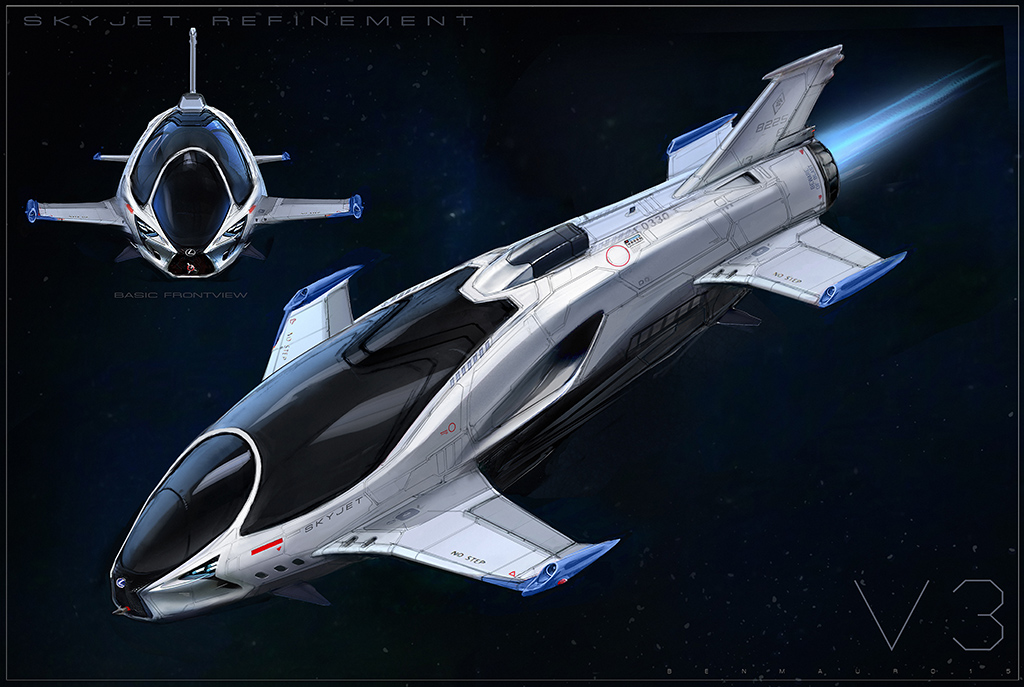
Valerian And The City Of A Thousand Planets photos courtesy of STXfilms and EuropaCorp
What was Luc’s vision for the SKYJET originally?
Luc was after something simple and iconic, something the audience would be able to easily understand and remember long after they left the theater.
What is the main inspiration for the design of the ship?
The exterior design inspiration mainly came from nature, looking at things like dolphins, orca and sharks to create a very fast and aerodynamic looking design. I also looked at more man made objects such as fighter jets, luxury single seater submersibles and other aquatic/flying vehicles to make sure the scale and level of detail was suitable for the SKYJET in the world we were trying to create in the film.
What is the primary function of the SKYJET? Is it a personal commuting vehicle for future motorists or is it a more specialized mode of transportation?
The way I understood it was that the SKYJET was more of a specialized military type vehicle built specifically for Valerian and Laureline (or whichever agency they work for) to be used by highly trained agents on their missions and adventures all over the galaxy.
Do you design a vehicle like this thinking of material components? For example, is the outer shell composed of something like carbon-fiber or a completely new material from the future?
I imagined it would be some sort of advanced future military grade metal material capable of withstanding any blasts and attacks from various alien technologies/weapons they might encounter on their missions.
How fast does the SKYJET travel? Can you give us details on its proposed performance? Does it have an altitude limit, or can it fly in outer space?
I imagined the top speed and altitude limit to be comparable or exceed modern day fighter jets (An F-22 Raptors top speed is 2,410 km/h) while flying on planets with atmosphere. While flying in space I imagine it would go faster without any atmosphere/friction to slow it down.
What role do you think AI might play in cars of the future?
I think AI and autonomous driving will become a big part of cars in the near future, especially in larger city based locations congested with traffic. Those technologies will definitely help streamline commutes and keep things moving more smoothly while cutting down on accidents. A car will most likely start to become more of a moving extension of a person’s office or leisure/entertainment space with all control given up to AI. That being said, I hope manually driven car technology will still exist in some form so that cars can be used for fun.
Lastly, for our fans and followers who might want to get into concept design for films one day, what advice would you offer them that you feel is invaluable?
If you really want to do this job for a living then go for it! When I was starting out a lot of this information was really hard to find and isolated to a few schools in California which not everyone could afford, but I feel like now all information needed to be a competent designer/illustrator in games and films is easily available/affordable in books and the dozens of online schools or artists Gumroads/Patreons offering very high level training for not a lot of money. It’s almost the opposite of what I experienced starting out, the difficulty now is from there being too much information available to you which I think is a good problem to have. So if you know what you want to learn and are self motivated enough to put in the time to learn it, the sky’s the limit.
